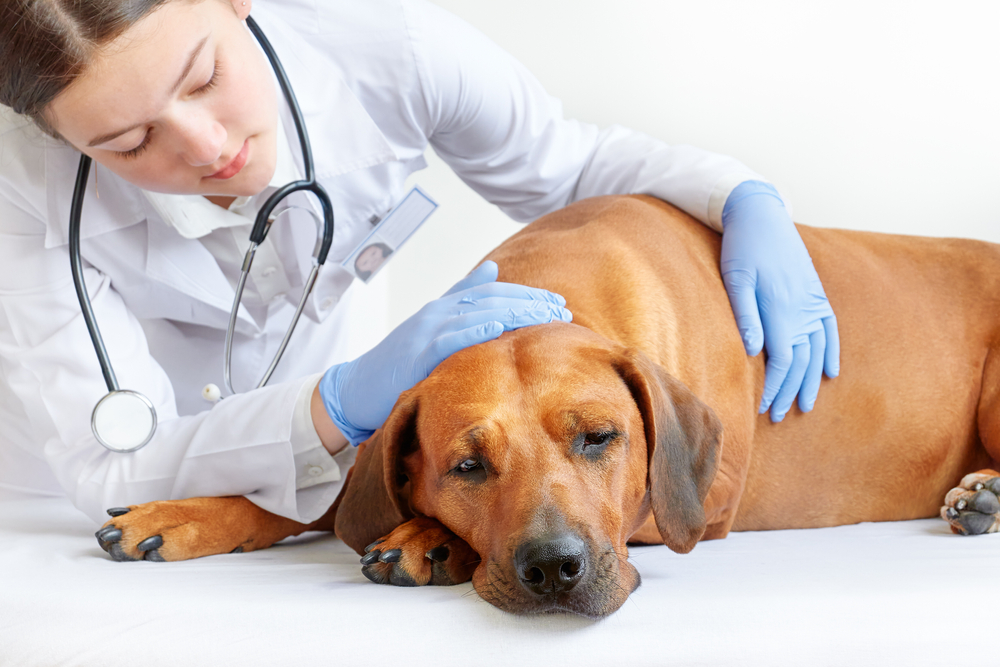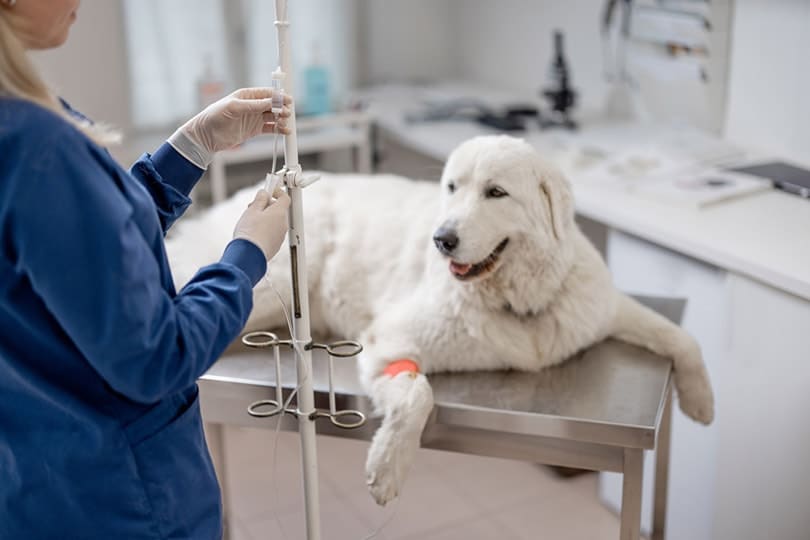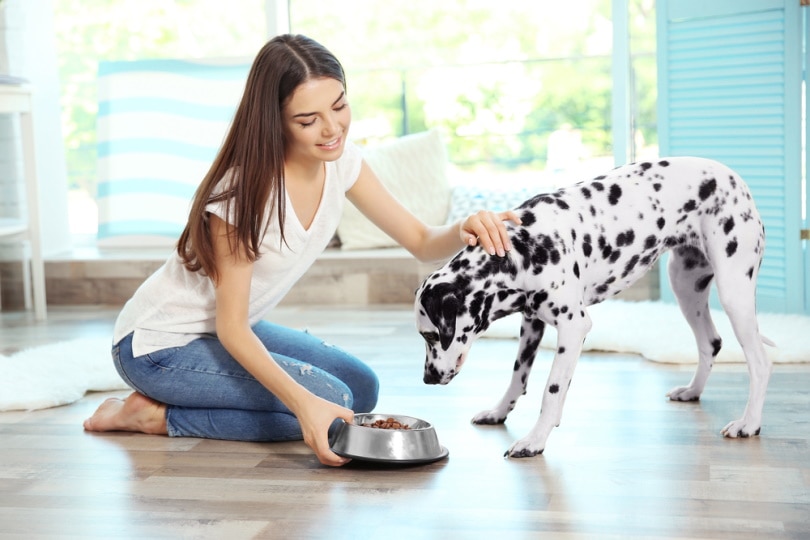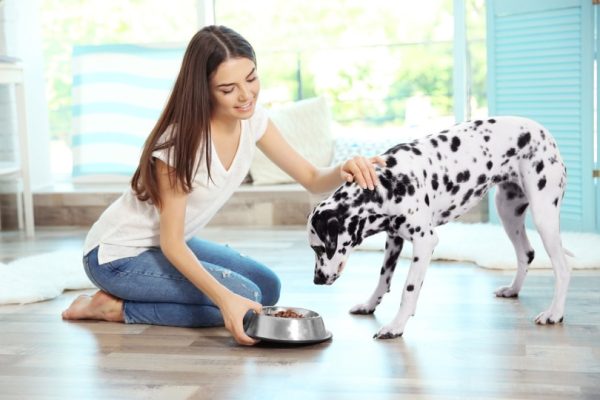Dogs with pancreatitis require low to moderate fat levels and moderate protein levels in their diet.1 These dietary changes help minimize the stimulation of the pancreas to prevent further organ damage and inflammation. So, is chicken liver good for dogs suffering from pancreatitis? While it can be given in moderation to healthy dogs, chicken liver should not be fed to dogs with pancreatitis. Chicken liver is high in protein and has a medium fat content, so feeding this organ meat to a dog with pancreatitis can worsen the condition and is not recommended without discussing dietary options with your veterinarian first.
What Does a Normal Pancreas Do?
The pancreas is an essential organ that makes enzymes and hormones to help with digestion, known as endocrine and exocrine functions.2 The endocrine pancreas produces hormones, such as insulin and glucagon, that regulate blood sugar levels in the body. Digestive enzymes secreted by the exocrine pancreas help break down food components such as proteins, triglycerides, and complex carbohydrates into usable nutrients. The exocrine pancreas also produces bicarbonate, which protects the intestinal tract from stomach acid. When functioning normally, the pancreas makes digestive enzymes in an inactive state that travel through the pancreatic duct to the first portion of the small intestine,3 the duodenum. This is where the digestive enzymes from the pancreas activate to begin the process of digestion.

What Is Pancreatitis?
Dogs can be prone to many digestive disorders. Unfortunately, pancreatitis is one of them, and many cases occur spontaneously without rhyme or reason. An inflamed pancreas is known as pancreatitis. This occurs when the secretion of the digestive enzymes slows and activates early in the pancreas instead of in the duodenum. As a result, the pancreas starts digesting itself, causing damage and triggering inflammation. Cases can be acute (short term) or chronic (long term), though both forms can be severe depending on the amount of damage to the pancreas. Other abdominal organs, such as the liver, bile ducts, gallbladder, and intestines, can suffer secondary damage from digestive enzymes leaking from the inflamed pancreas into the abdominal cavity. Acute forms of pancreatitis can range from mild swelling to bleeding in and around the pancreas.
What Causes Pancreatitis in Dogs?
Pancreatitis is a common condition in dogs, though 90% of cases have an unknown cause. Risk factors may include obesity and old age; eating garbage, fatty meals, and table scraps; severe abdominal trauma; abdominal surgery; certain medications, such as corticosteroids, chemotherapy agents, and antibiotics; elevated blood levels of triglycerides (fat); and hyperadrenocorticism (Cushing’s disease). Infectious diseases, such as Babesia canis or Leishmania, can also lead to pancreatitis.

Are Certain Dogs More Prone to Pancreatitis Than Others?
Some dog breeds may be more susceptible to pancreatitis than others. Miniature Schnauzers tend to have higher blood levels of triglyceride lipids than many other dogs. A high frequency of immune-mediate disease is seen in English Cocker Spaniels, which may attack their pancreas. Other breeds with a high prevalence include Boxers, Yorkshire Terriers, Dachshunds, Poodles, and sled dogs. Occasionally, dogs that recover from a sudden case of pancreatitis may have relapsing or recurrent episodes.
What Are the Signs of Pancreatitis in Dogs?
- Nausea
- Vomiting
- Diarrhea
- Decreased appetite
- Abdominal pain
Other signs can include lethargy, fever, and depression. Abdominal pain may present with dogs that put themselves into a “praying position,” with their hind end up in the air and their front end lowered to the ground. In severe cases, pancreatitis can lead to shock and death.

How Is Pancreatitis Diagnosed?
Your veterinarian may begin with a physical examination of your dog. Palpation of the abdomen may produce signs of pain, such as splinting and guarding of the abdomen. After a thorough exam, your veterinarian may take a blood sample from your dog to look for elevations in white blood cells and/or pancreatic enzymes, which may point toward pancreatitis. More accurate tests, such as the specific canine pancreatic lipase test, can be run in the clinic to show a positive or negative result for pancreatitis. Imaging, such as abdominal X-rays or ultrasound, may be useful to aid in the diagnosis of pancreatitis, but inflammatory changes may not always be apparent through these modalities.
How Do You Care for a Dog With Pancreatitis?
In mild cases, supportive care enables the pancreas to rest and the body to heal. Food should be withheld for 2 to 3 days from dogs that are vomiting until it ceases. During recovery, dogs should be fed low-fat and highly digestible meals to avoid worsening or recurrence of pancreatitis.
Pain medications, anti-inflammatories, anti-nausea and anti-diarrhea medications, antibiotics, and IV fluids may be administered to help recovery. Many dogs are hospitalized and closely monitored for 2 to 4 days while receiving medications and IV fluids. Once vomiting ceases, low-fat and in some cases, low-protein, diets are gradually reintroduced to avoid flaring pancreatitis.

What Do I Feed a Dog With Pancreatitis?
The goal of treatment is to minimize pancreatic secretion of digestive enzymes while enabling the body to heal. This requires a low-fat, moderate-protein, and highly digestible diet.
Nutrients based on a dry-matter basis for dogs with pancreatitis are as follows:
| Fat | ≤15% moderate fat content (non-obese, non-hypertriglyceridemic dogs)
≤10% low-fat content (obese, hypertriglyceridemic dogs) |
| Protein | 15–30% moderate protein content |
Commercial veterinary therapeutic diets are available for dogs with gastrointestinal disease. These are highly digestible and formulated to meet the nutritional needs of dogs with pancreatitis while aiding in recovery. Hill’s Science Diet, Purina, and Royal Canin are a few examples of GI-therapeutic diets available in both moist and dry forms.
Chicken liver is a nutrient-dense organ meat packed with amino acids, essential fatty acids, cholesterol, and vitamins. One cooked chicken liver weighing 44 grams has approximately 10.8 grams of protein and 2.9 grams of fat. Chicken liver is a great source of protein and can often correct amino acid deficiencies in home-cooked meals for dogs. Since it is a rich source of several key nutrients, healthy dogs can be offered liver once a week or no more than half of the total meat content in their diet regularly.
Chicken liver fat and protein content on a dry-matter basis (rounded up to the nearest percentage):
| Fat | 13% |
| Protein | 78% |
The dry matter values of chicken liver are calculated based on the nutrient composition of chicken by-products. Dry matter is the remaining nutrient content after the moisture has been removed. Chicken liver contains a significant amount of protein and moderate fat content, which is why it is not recommended for dogs with pancreatitis. In fact, certain free amino acids in the duodenum stimulate pancreatic secretion more so than fat itself. The key is to avoid excessive dietary protein while ensuring adequate levels are in the diet to promote healing and recovery.
Tips for Keeping Your Pet Safe
- Feed your dog with pancreatitis a low-fat and highly digestible diet. Chicken liver should not be part of their meals.
- Avoid feeding your dog table scraps and fatty treats and foods, and securely contain your garbage to minimize pancreatitis risks.
- Always discuss your dog’s nutritional needs and dietary management with your veterinarian.

Final Thoughts
Dogs with pancreatitis require a low-fat, moderate-protein, and highly digestible diet to minimize the secretion of digestive enzymes from the pancreas. There are veterinary therapeutic diets that are formulated to meet the nutritional needs of dogs while aiding in the recovery process. The high-protein and moderate-fat content of chicken liver may worsen pancreatitis and should not be fed to your dog without discussing their dietary management, needs, and options with your veterinarian first.
See Also:
- Can Dogs Eat Chicken Gizzards? Vet-Reviewed Facts & FAQ
- High Liver Enzymes in Dogs: What it Means and What to Do (Vet Answer)
Featured Image Credit: Africa Studio, Shutterstock
Contents
- What Does a Normal Pancreas Do?
- What Is Pancreatitis?
- What Causes Pancreatitis in Dogs?
- Are Certain Dogs More Prone to Pancreatitis Than Others?
- What Are the Signs of Pancreatitis in Dogs?
- How Is Pancreatitis Diagnosed?
- How Do You Care for a Dog With Pancreatitis?
- What Do I Feed a Dog With Pancreatitis?
- Tips for Keeping Your Pet Safe
- Final Thoughts












